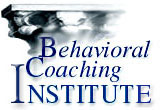|
|
||||||
The
breadth of executive coaching makes it impossible to nominate all areas
the coach and coachee can explore. However, the following is a list of
some of the major intervention areas of executive coaching:
As noted in our first book,
'The Complete Guide to Coaching at
Work', we have found Witherspoon’s
typology of executive coaching to be comprehensive. He classifies four
types of executive coaching on a continuum of coaching for skills,
coaching for performance, coaching for development and coaching for the
executive’s agenda. Coaching
for skills helps the executive learn specific skills,
abilities and perspectives over a period of several weeks or months. The
skills to be learned are usually clear at the outset and are typically
related to skills associated with an executive assuming new or different
responsibilities. Coaching
for performance focusses on the executive’s
effectiveness in his or her current position. Frequently it involves
coaching for one or more management or leadership competencies, such as
communicating vision, team building or delegation. Coaching
for development refers to coaching interventions that
explore and enhance the executive’s competencies and characteristics
required for a future job or role. It can be associated with
outplacements, restructuring and reengineering in the organization. Coaching
for the executive’s agenda generally entails working
with an executive on any personal or organizational concerns he or she
may have. It can focus on issues surrounding the executive, such as
change and company downsizing. Personal issues are more likely to arise
in this type of coaching. Executive coaches can also work with managers to be coaches.
CASE
STUDY 1.- TRAIN THE INTERNAL ORG. COACH PROGRAM
This Coaching Program was developed to address a Defence Forces Training Departments specific needs.
The Trainers
teach over a thousand personnel a year. The focus of the
program was to certify the trainers as coaches and thereby:
increase the effectiveness of their training methods by
enhancing the delivery and retention of the subject
matter - be it soft skills or technical information, improve their
ability to establish rapport, trust and credibility and improve
their ability to adapt their teaching style to the students
learning styles thus enabling their students to easily apply the
newly learnt information. The tailored program, conducted over 3 months, used a combination of distance-learning modules, including pre-study of course manual and set reading material, followed by 4, two-day Intensive Group Workshops and individual stage 1 and follow-up coaching sessions.
CASE
STUDY 2. - EXECUTIVE COACHING
A Coaching
program was developed to address a Senior Management
Team's specific needs to: be more 'Transformational', 'Emotionally
Intelligent' in their leadership style, to improve their behavioral
flexibility and improve their cross functional effectiveness. The
program was delivered through team workshops addressing
common workplace issues and one to one personal developmental
coaching sessions focusing on under-performance issues. Results
were benchmarked and linked to measurable changes in behavior. The program was over a twelve month period starting with a number of stage 1 one-to-one sessions. The team workshops were followed by one-to-one coaching driven by the needs of the individual coachees.
CASE
STUDY 3. - BUSINESS COACHING
A Customized Development Program for Managers, Senior Doctors and Nurse Managers in a Private Hospital Group. The program had to take into the account the acute lack of time staff have for position development and an expanding network of new hospitals. The staff identified a need to be more effective in the management and utilization of change, more 'Transformational' in their leadership style and more confident and assertive in their handling of conflict. Emphasis was also placed on the values and culture of the organization as well as skills. A mix of team workshops, one-to-one coaching and action learning projects were developed. It was agreed that no one within the group should have access to an individual's assessment report. The feedback was facilitated only to the coachee and a self development plan/coaching cycle was agreed to. Some objectives were to: improve cross functional effectiveness - as a team and individually, develop an awareness of their behavioral style and address areas which may cause them to under-perform, understand the nature of Change and Transition and be able to anticipate and manage both elements proactively and to design a competency framework which reflected the values and ethos of the organization. ...They set up rigorous measurements for (among other things) employee attitude and satisfaction. Their statistics showed that consistently as the quality of management improved, so did employee attitudes, and then customer satisfaction. The numbers showed that “a 5 point improvement in employee attitudes will drive a 1.3 point improvement in customer satisfaction, which in turn will drive a 0.5% improvement in revenue growth.” In a billion dollar company, 0.5% increase in revenue is substantial. Sears
learned that when their managers fully value and develop their employees
(i.e., using the coach approach), they could confidently predict future
revenue growth in a particular district.
When employee satisfaction increased 5%, revenue growth in a
particular store increased by 5.5%.
|
||||||
 |
||||||

